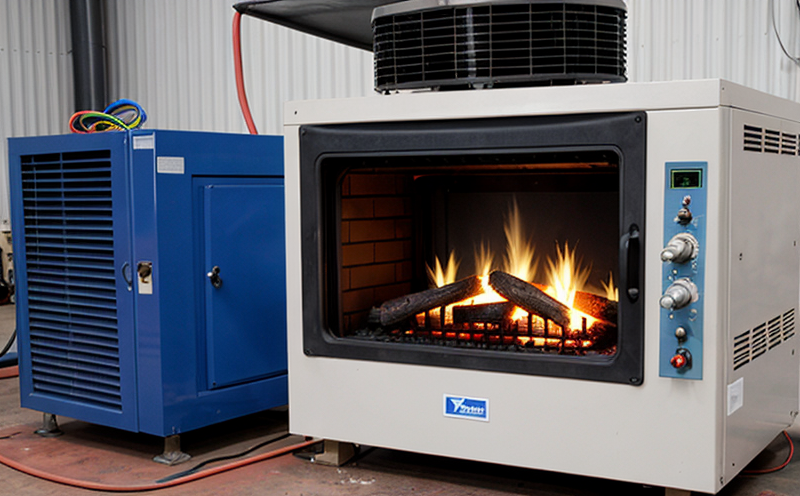IEC 60068 2 5 Solar Radiation Thermal Testing of Outdoor Lighting
The IEC (International Electrotechnical Commission) standard 60068-2-5 specifies the requirements for conducting solar radiation thermal testing on outdoor lighting fixtures. This test evaluates how well a light fixture can withstand solar radiation, which is crucial in ensuring that outdoor lighting products perform reliably under real-world conditions.
Outdoor lighting systems are subjected to intense solar radiation during daylight hours, especially those installed in sunnier regions. Solar radiation can cause thermal stress on the materials used in these fixtures, potentially leading to premature failure or degradation of performance. This standard is essential for manufacturers and quality assurance teams to ensure that their products meet safety and durability requirements.
The test involves exposing a light fixture to solar radiation under controlled conditions. The intensity and duration are set according to the specific requirements outlined in IEC 60068-2-5, which considers factors such as geographical location, usage environment, and expected lifespan of the product. The testing apparatus includes a solar simulator capable of simulating various solar spectra and temperatures.
After the test, the performance of the light fixture is evaluated based on predefined acceptance criteria. These criteria ensure that the lighting fixture maintains its luminous intensity, color rendering index (CRI), and other critical parameters within specified limits after exposure to solar radiation. This testing helps manufacturers identify any potential weaknesses in their products' design or materials.
For quality managers and compliance officers, understanding this standard is vital for ensuring product safety and performance. R&D engineers can use the results of these tests to improve product design and material selection. Procurement teams need to be aware of the requirements to specify appropriate testing during procurement processes.
Scope and Methodology
| Test Parameters | Description |
|---|---|
| Solar Radiation Intensity | The intensity of solar radiation is measured using a spectroradiometer. It simulates the solar spectrum and temperature that the fixture will encounter in its intended environment. |
| Duration | The duration of exposure to solar radiation varies depending on the specific requirements set by IEC 60068-2-5. It typically ranges from several hours to days, depending on the expected lifespan and usage conditions of the fixture. |
| Environmental Conditions | The test is conducted in a controlled environment that can simulate various climatic conditions, including temperature variations and humidity levels. |
| Acceptance Criteria | Description |
|---|---|
| Luminous Intensity | The luminous intensity of the fixture is measured before and after exposure to solar radiation. It must not decrease by more than a specified percentage. |
| Color Rendering Index (CRI) | The CRI of the fixture is also evaluated pre- and post-test. Any significant changes in color rendering could indicate material degradation or other issues. |
Environmental and Sustainability Contributions
Sustainability: By ensuring that outdoor lighting fixtures can withstand solar radiation, this testing contributes to the longevity of products, reducing waste and resource consumption. This ultimately leads to a more sustainable approach to product design.
Energy Efficiency: Ensuring that lighting fixtures perform well under varying environmental conditions helps promote energy-efficient solutions for outdoor spaces.
Economic Impact: Reliable products reduce the need for frequent replacements, lowering overall costs and supporting local economies by ensuring the longevity of infrastructure investments.
Public Safety: Ensured reliability minimizes the risk of failure during critical conditions, enhancing public safety in outdoor areas.
Competitive Advantage and Market Impact
Better Product Quality: Compliance with IEC 60068-2-5 ensures that products meet the highest standards, giving manufacturers a competitive edge in the market.
Enhanced Reputation: Demonstrating adherence to international standards can significantly enhance a company's reputation and brand image.
Innovation: The insights gained from these tests can drive innovation by identifying new materials or design approaches that can withstand harsh environmental conditions.
Market Access: Compliance with this standard opens up opportunities for market access in regions where stringent testing requirements are enforced.





